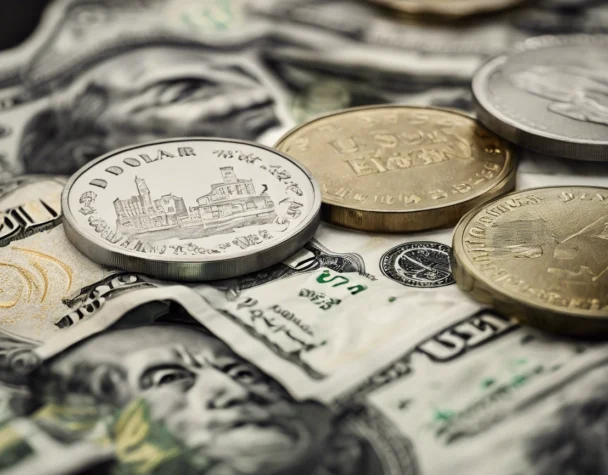
U.S. Dollar Tumbles as Euro, Yen, and Franc Surge on Safe-Haven Demand
Mon, April 21, 2025Greenback Under Pressure from Trade Tensions and Investor Doubts
The U.S. dollar is facing mounting headwinds in April 2025 as escalating trade tensions and waning investor confidence drive a broad sell-off. The dollar index has dropped nearly 4% this month — its steepest decline since 2022 — as global markets adjust to the shockwaves triggered by President Trump’s sweeping tariff policies.
According to Reuters, major institutional players like RBC BlueBay Asset Management have begun shorting the dollar, citing concerns over fiscal policy credibility and geopolitical instability. The trend is part of a broader “sell America” movement, with investors reallocating capital to currencies seen as more stable or better aligned with current macroeconomic conditions.
The Guardian reports that investor sentiment is shifting rapidly in response to tariffs that threaten to fuel inflation and reduce global growth, leaving the dollar vulnerable to further downside (The Guardian).
Euro, Yen, and Franc Strengthen as Safe-Haven Flows Dominate
The euro, Japanese yen, and Swiss franc have all gained significant ground against the dollar as traders seek safety in the face of economic turbulence.
The euro (EUR/USD) has appreciated by nearly 5% in April, despite the European Central Bank’s 25 basis point rate cut. The single currency is now trading near $1.1362. Analysts attribute this strength to the euro’s emerging role as a safe-haven currency amid the dollar’s decline and broader global uncertainties.
The Japanese yen (USD/JPY) has surged roughly 5% to hover around 142.61. Japan’s Finance Minister recently pushed back against U.S. accusations of currency manipulation, stating that yen-buying interventions were aimed solely at reducing excessive volatility — not devaluation (Reuters).
The Swiss franc (USD/CHF) has outperformed most major currencies, jumping nearly 8% to reach its strongest level against the dollar in over a decade. As geopolitical risks mount, the franc’s traditional status as a haven has made it a magnet for capital inflows.
The British pound (GBP/USD) has also advanced to around $1.3294, helped by easing inflation pressures and the Bank of England’s dovish tone, which has supported expectations of future rate cuts without derailing the currency’s appeal.
Mixed Fortunes for Commodity and Emerging Market Currencies
Commodity-linked currencies like the Australian dollar (AUD/USD) and New Zealand dollar (NZD/USD) have shown mixed performances amid volatile commodity prices and risk aversion. The Aussie is holding near $0.6375, while the kiwi has dipped to around $0.5938.
In Latin America, Argentina has removed most capital controls and allowed its peso to float within a managed band. The move, backed by a fresh IMF bailout package, aims to unify exchange rates and restore market confidence (AP News).
As FX markets brace for continued volatility, all eyes remain on central banks, trade policy shifts, and inflation data to determine future direction. The dollar’s recent decline may not be temporary — especially if economic uncertainty continues to cloud the U.S. outlook.

